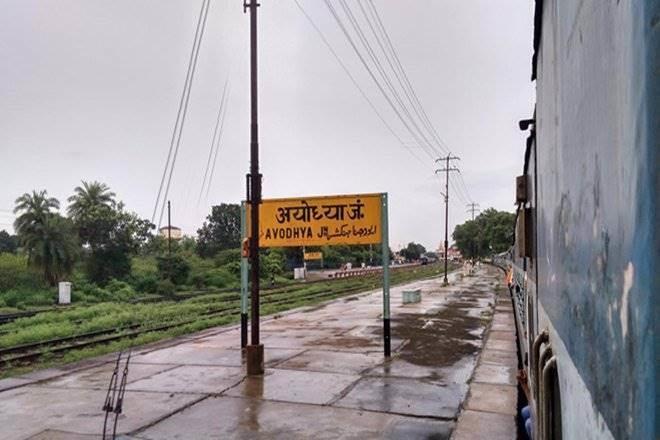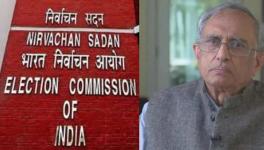How Pious Is Today’s Ayodhya?

Ayodhya, once considered a pious city by devout Hindus has, over the years, completely changed. It has transformed from a Hindu political laboratory to the politico-religious capital of the Hindu Right.
Thanks to the experiment of the Sangh Parivar, with the Rashtriya Swayamsevak Sangh (RSS) in the lead, Ayodhya has metamorphosised into a centre of syndicates spiritual, political, criminal and battles over its land. This is substantiated by Dhirendra K Jha in his well-researched book, Ascetic Games: Sadhus, Akharas and the Making of the Hindu Vote, published in 2019. In the last two decades, these ascetic games have turned the city into a killing field for sadhus.
Ayodhya came to prominence after the RSS and its offshoot, the Bharatiya Janata Party or BJP launched the Ram Mandir movement centred around the town in the 1980s. For centuries, the land in Ayodhya has been owned by various akharas of sadhus. The akharas belong to various Hindu sects or denominations; Shaivite, Vaishnavite and even Sikhisim. The mahants or celibate Hindu priests are the gurus of the sadhus, and control these akharas. Therefore, the mahants play an important role in the politics of religion in Ayodhya.
In particular, the akharas are used by the RSS as a political tool. In the past, they (the RSS) never had ample support of the mahants, and hence it was considered difficult for the BJP and the RSS to champion the Ram Mandir movement without their support. There are various reasons for the akharas not supporting the mandir movement.
The Sangh Parivar created a group of young disciple sadhus in various akharas through allurement and were made to rebel not just against their mahants, but even backstab and kill them. The disciples were made to conspire against their gurus and this has landed Ayodhya into a state of affairs wherein no “math” or sect’s akhara is untouched by litigation. The mahants became so insecure that some started living outside their akharas and others hired bodyguards.
The mahants were killed in large numbers by their disciples in cohort with members of the Sangh. This has been documented Jha’s book. Yet, no criminal complaints have been registered against such killings. Because, the mahants are neither cremated nor buried but immersed in the Sarayu river, which according to Hindu mythology and belief, is how they can reach Vaikunth, the celestial abode of the god Vishnu. The medico-legal practice of post-mortems is strongly resisted by Ayodhya’s religious bodies. Hence, hardly any case of a mahant’s death ever reaches the police. Therefore, the succession of new mahants to the akharas is violent and not natural.
There is a famous folk lore in Ayodhya as mentioned in the book:
Charan daba ke sant bane hain,
Gardan daba mahant;
Paramparaa sab bhool gaye hain,
Bhool gain hain granth;
De do inko bhi kuchh gyaan, dharaa par ek baar tum phir aao,
Hey Ram
They became sadhus by massaging feet,
Mahants by throttling throats,
They have forgotten tradition and the scriptures,
Enlighten them—come down to Earth one more time,
O Rama.
A mahant is even more powerful for he is the custodian of the land that an akhara is endowed, usually a large tract. They can sell the land and use it as they wish in the name of the deity. As a controller of these lands, the mahant becomes a powerful figure. This gave the Sangh Parivar its modus operandi to make inroads into the maths and akharas. This unexplored aspect of the Ram Mandir movement has been extensively worked out in the book.
The RSS and its other offshoot, the Vishwa Hindu Parishad or VHP, has reduced the so-called guru-shishya relationship which forms the bedrock of Hindu mysticism. Greed for power, money, pelf, and the accoutrements of power such as body guards now drive the politics of Ayodhya’s akharas. They do not represent the kind of ascetism that devout Hindus would look up to. As the centre of Hindutva politics, the ethos in Ayodhya has transformed to something completely alien from Hindu asceticism. The biggest shift has been away from asceticism and mysticism and towards something inherently political.
At present there is speculation in Ayodhya over the Babri Masjid-Ram Mandir dispute, which is in the final hearing stage in the Supreme Court. Whether the decision will be in favour of the Ram Mandir group is the subject of intense discussion. The land and estate mafia are hectically purchasing massive plots in and around the city. It is believed that the central government will make large investments here to boost the prices and income from the region’s land. Mostly, the buyers are said to be aligned with or affiliated to the Sangh Parivar or the BJP. Some Gujarati businessmen have bought land, in anticipation of the investments.
The other development in the region is highly political. This pertains to the grand project of the RSS to transform Ayodhya into a politico-religious capital of India—that is, a model of Hinduised India. It has already started constructing a large building for its office in the city, with four floors running into 40,000 square feet. Why does it need so much space? Even before the Supreme Court delivers a judgement, the RSS headquarters in this new religious capital will be ready. Clearly, its ambition, judging by its strategic interventions in the past, is to pursue its Hindutva project.
There are two layers to the Rama Temple movement. The first is of devout Hindus who genuinely believe in Ayodhya’s mysticism; who consider it the birth place of Rama. This also shows how the democratic movements have failed to create a progressive and democratic outlook when it comes to religious matters in the city.
The second is the layer of politicians, especially of the Sangh Parivar, who have used Ayodhya to perpetuate Hindutva politics. This layer has vitiated the city’s atmosphere. Their determination to build a Rama Temple at the site of the Babri Masjid is meant to defeat the Muslims and amounts to a victory of ancient barbarism. This is what has transformed Ayodhya from a pious mystic town to a place of mafias and killers, by attacking the bedrock of Hindu mysticism i.e., the guru-shishya relationship. Can such a movement be a true representative of the Hindus is the question.
Get the latest reports & analysis with people's perspective on Protests, movements & deep analytical videos, discussions of the current affairs in your Telegram app. Subscribe to NewsClick's Telegram channel & get Real-Time updates on stories, as they get published on our website.
























